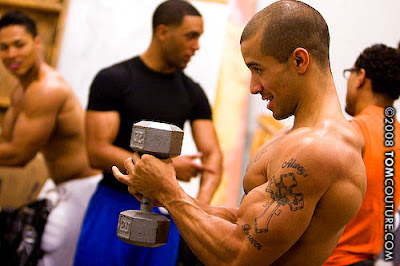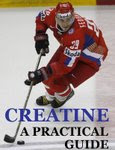By Barbara Russi Sarnataro
WebMD Weight Loss Clinic-Feature. Reviewed by Louise Chang 
The Basics:
Build Muscle for Better Health. Strength training is about more than getting buff - all know how important cardiovascular exercise is -- how it's great for your heart, cholesterol, and blood pressure. And whether you choose to walk, bicycle, or jog, you know that any exercise that increases your heart rate helps you burn calories and melt away unwanted pounds.
But that's only half the equation.
For a balanced fitness program, strength training is essential. It can slow the muscle loss that comes with age, build the strength of your muscles and connective tissues, increase bone density, cut your risk of injury, and help ease arthritis pain.
"Strength training is very important, not just for your muscles but for your bones," says certified fitness trainer Debbie Siebers. "It's preventative for [bone-thinning] osteoporosis and other problems."
Studies from the CDC have found that muscle-building exercise can also improve balance, reduce the likelihood of falls, improve blood-sugar control, and improve sleep and mental health.
And let us not forget the weight-loss benefits. Not only does it make you look trimmer and shapelier, but building muscle also helps you burn calories -- even after your workout is done.
"Three to four hours after a strength-training workout, you're still burning calories," says Seibers, a creator of fitness videos including the "Slim in 6" series.
Strength training is especially important for dieters. When you lose weight, up to a quarter of the loss may come from muscle, which can slow your metabolism. Strength training helps you rebuild any muscle you lost by dieting -- or keep you from losing it in the first place.
Getting Started So you're convinced of strength training's virtues. But just how do you go about getting started?
The weight room at the gym, with all the buff bodies and complicated-looking equipment, can be intimidating to a beginner. Indeed, for someone with back or joint pain, just picking up a weight might seem daunting. Then there's the issue of proper form: Without it, you could do more harm than good trying to build strength.
Your best bet when starting out, the experts say, is one-on-one help from a qualified fitness trainer -- whether it's a personal trainer you've hired, or an instructor at your gym. A trainer can address your personal goals and limitations and can help you with alignment and execution of each exercise.
"I can't tell you how many people I see with a knee injury because they were not taught correctly how to do a lunge or squat," says Sue Carver, physical therapist with A World of Difference Therapy Services in Little Rock, Ark.
Siebers also recommends checking out books, videos, and/or fitness- and health-related web sites for guidance on exercises and form.
Indeed, good technique, not heavy lifting, should be your primary goal in the beginning, Carver says.
 Getting Started continued...
Getting Started continued...Siebers recommends using a heavy enough weight to feel resistance, but not strain or pain. Your individual body will determine just how much that is, and you should err on the light side at first; five pounds may not seem like a lot, but it's better to be conservative than suffer.
And how much should you work out? According to the American College of Sports Medicine guidelines, beginners should do at least two days per week of any type of strength-training exercise. Your workout should consist of 8 to 12 repetitions each of 8 to 10 different exercises working all the major muscle groups -- chest, back, shoulders, arms, abdominals, and legs. (A repetition is how many times you lift the weight, pull the rubber tubing, do a pushup, or whatever.)
Machines or Free Weights?Both free weights and weight machines work well, and experts say there's no evidence that one is superior to the other, so this is largely a matter of choice.
Machines are a good idea for people who are overweight and/or out of condition, since the exercises are generally done seated and with back support, Seibers says.
But if machines are not an option, investing a few dollars in a set of light dumbbells and/or some resistance tubing can give you what you need to start toning those muscles.
Whichever option you choose, keep your moves basic at first, the experts say. For the arms and upper body, try these
exercises:
Chest presses
Reverse flies for the back
Overhead presses for the shoulders
Bicep curls
Triceps kickbacks or extensions
For the lower body, don't start out with squats and lunges, which can put too much impact on weak joints.

Instead, try:
Quadriceps extensions for the front of the thigh.
Hamstrings curl for the back of the thigh.
Side-lying or standing leg lifts to work the inner and outer thigh.
And don't forget to work on strengthening your "core" muscles -- the ones in your abdominal and lower back area. Core stability is key to avoiding injury, according to Carver. "Somebody with strong upper extremities but no core stability can hurt themselves doing a bicep curl, for example, if they can't stabilize the trunk," she says.
You'll also
avoid injuries - and get the best results -- by varying your workouts. For example, if you work the biceps, back and legs one day, work the triceps, chest and shoulders the next time you train, Siebers says. Alternating between muscle groups gives the ones you worked plenty of time to recover.
Incorporating stretching in your strength program will also help keep injuries at bay, says Carver. Most important, don't push too hard. Carver always cautions people that "feeling some discomfort in the muscle is OK, but feeling it in the joint is not."
If you have a health condition or previous injury, you may need to do modified versions of certain exercises or skip them altogether, she says. That's when it's especially important to work with a fitness trainer.
 Staying With the Program
Staying With the ProgramSuccess comes from structure and constant support, according to Siebers. "Calendar it up," she suggests: Chart your week of exercise out in advance so you know exactly what you're expecting of yourself.
Having a friend to train with is one of the best ways to stick to a program, Siebers says, even if he or she is a cyber-pal.
"Internet chat rooms and support groups really help to motivate," she says. "There are a million people out there in your same situation getting online every night and encouraging each other. People need that day-to-day hand-holding."
But perhaps the most important things you need for a successful strength training program -- or for successful weight loss -- are patience and acceptance, she says.
"The problem is, people look too far down the road trying to see the big picture too quickly," she says. "You have to try to accept and love yourself today and know that each day, you're going to get better."







